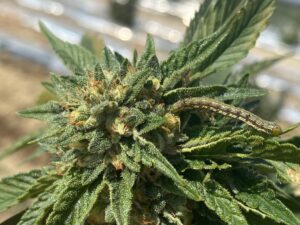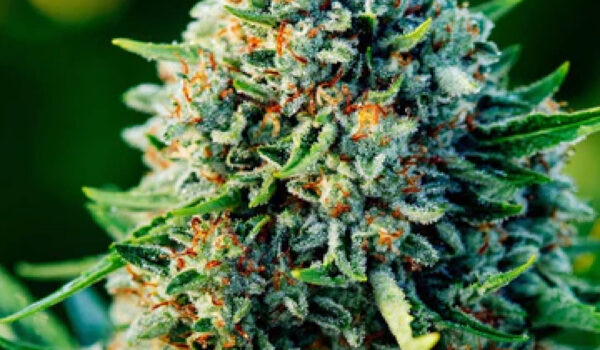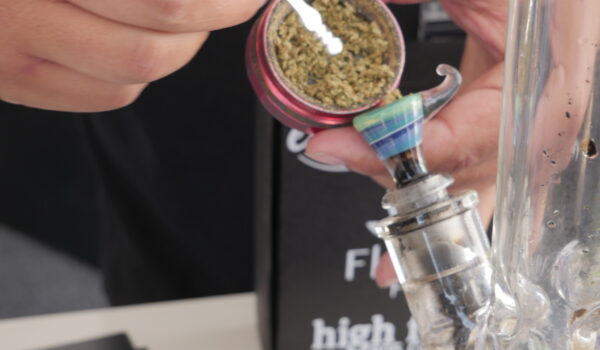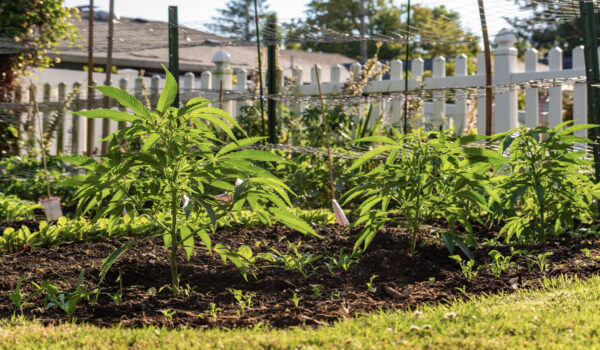By Rincon-Vitova Insectary
Caterpillars (& Moths)
“Caterpillar” is the common name for the larvae of members of the order Lepidoptera (the insect order comprising butterflies and moths). Armyworms and cutworms generally eat seedlings. Bollworms and budworms typically feed on seeds and inside flowers. Hemp Borer and European corn borer are often found inside of stalks, while cabbage moths feed on leaves. The type of Lepidopteran pest doing the damage will determine the approaches that can be taken.
Identification
Leaf Feeders:
Caterpillars have a segmented body: a head, a thorax, and an abdomen.
Three pairs of jointed legs with hooks and usually five pairs of stumpy prolegs
Cutworms & Armyworms:
Similar in appearance to foliage feeders
Various colors, stripes and mottling
Borers:
Larvae are quite small, with a maximum size of about 6-8 mm.
Younger larvae are cream colored, with a dark brown head.
Nearing pupation they become orange or orange-red.
Budworms:
Variety of colors with dark stripes along body
Yellow/green heads, black legs
Life Cycle
Leaf Feeders:
Depending on the species either overwinters as eggs or as pupae in a chrysalis or cocoon.
The larval stage usually lasts from about two weeks to a month, and is the longest life stage
Pupates, and emerges later as an adult moth.
Cutworms & Armyworms:
Overwinter as pupae or larvae
Eggs laid on plants, in low spots, or poorly drained land
Larvae feed for 10-30 days, pupate, and emerge as adult moths. 3-6 generations depending on species
Borers:
Stage that survives the winter outdoors is a full-grown larva found within the stems/branches or seed heads of hemp.
They transform to the pupal state in late winter/early spring and later emerge as the adult moth.
After mating the females lay eggs on hemp plants.
Eggs hatch & caterpillar attempts to tunnel into the plant, often entering at junctions of branches.
Boring larvae move into seed heads in late summer, feeding on developing seeds.
Budworms:
1-6 generations per year.
Overwinter as pupae in the soil in temperate climates (no overwintering in tropical).
Monitoring: Watch for moths in flight!
Leaf Feeders:
Look for feeding holes, excrement, and webbed or rolled leaves.
Eggs are typically laid on the undersides of leaves.
Cutworms & Armyworms:
Seedlings can be completely consumed.
There is often stem damage at the soil line.
Plants frequently tilt, wilt, and die.
Check for pests at night.
Borers:
Cause wilting of a bud or small flower stalk that it has tunneled.
Entry points are often marked with a bit of loose frass (their sawdust-like excrement).
Caterpillars (& Moths)
The larvae develop within the stem/branch and the sites of injury typically show a slight swelling.Evidence of parasitism: parasite cocoons next to caterpillars, darkened caterpillar eggs, or exit holes in dead caterpillars.
Budworms:
Eggs are hemispherical with ridges that radiate like wheel spokes
Loose webs and frass around buds
Cultural Practices
Black-light traps – Night-flying moths are attracted to the light and trapped in the funnel-shaped trap below the light.
Leaf Feeders:
Pheromone traps for adults (late winter through early summer) synthetic sex attractant that attracts male moths.
These are best used to identify the species of moths and to time Trichogramma releases.
Use a degree day calculator to find out when the moths are in flight (consult with local Ag Extension offices for details)
Cutworms & Armyworms
Eradicate weeds
Destroy egg clusters
Fall plowing. Re-cultivate in spring. Wait 2 weeks to plant (starves the larvae)
Borers:
Remove crop debris between growing seasons, which supports overwintering stages.
Remove volunteer hemp, an alternate host which can sustain the first generation.
Use a large-bore syringe to inject mineral oil into stalks. Wipe away frass. New frass indicates a need for repeat injection
Crop rotation with red clover
Sanitation
Budworms:
Deep plowing & weeding very important
Light Traps for adults
Shaking plants every 10 days & hand picking all larvae that fall out
Habitat: Alternate hosts: alfalfa, flax, peas, potatoes, lambsquarters, wild mustard
Avoid using pesticides: Neonicotinoids (clothianidin, imidacloprid) Carbamates (carbaryl), Pyrethroids (bifenthrin, cyfluthrin, fluvalinate, and permethrin). These materials are highly toxic to natural enemies and pollinators
Bio-Control
Bacillus thuringiensis subspecies kurstaki
A microbial insecticide that kills only caterpillars; caterpillars must feed on treated leaves to be affected.
It’s safe to use near bees, beneficial insects, and wildlife.
Most effective on small caterpillars and breaks down rapidly.
Treatment timing is critical.
Repeat weekly while caterpillars are present.
Application Rates: Application Rates may vary among different commercial products. Read labels carefully.
½ to 2 lbs per acre or 1-4 teaspoons per gallon or ½ to 2 lbs per 100 gallons of water.
Reapplication every 10-14 days can prevent ECB infestations (won’t kill borers already inside stalks)
Beauveria bassiana
68-86 °F >92% RH
An entomopathenogenic fungus wide host range, including soft-bodied beneficials
Best for sap-sucking & chewing insects
Spores germinate on insects – kill in 2-10 days
Some strains have 3-7 day residual activity
Weekly applications can prevent insect population explosions
Direct contact is important
Fine mist sprayers deliver best results
Spring/Summer aphids molt every 3-4 days, which may reduce efficacy
Can be used alone or in a tank mix with Bacillus thuringiensis (vars. kurstaki, aizawai)
Tank mix provides control of later instars (3rd to 4th) and aids in suppressing resistant populations.
Application Rates: Application Rates may vary among different commercial products. Read labels carefully.
½ lb to 2 lbs per 100 gallons of water or ½ to 2 qts per 100 gallons of water or ¼ to 1 teaspoon per 10 sq ft
Reapply every 3-5 days to ensure spores are on aphids long enough to cause infection
Tricogramma’ (T. platneri, T. minutum, T.brassicae): over 200 pest moth species including cutworms, fruit worms, leaf worms, leafrollers, loopers, armyworms, and borers.
Drill through moth eggs to deposit 1-3 of their own eggs.
Trichogramma larvae eat out the insides of pest eggs, pupate, and cut an exit hole in moth eggshells for winged adults Their short life cycle (7 to 10 days) allows as many as 30 generations per season, and rapid population increase.
Early season releases produce large populations positioned to fight pest invasions.
Application Rates: 1 card per acre per week
Release when moths are in flight
Hippodamia convergens
Ladybugs statistics: adults consume 62 budworm eggs/day larvae consume 34 eggs per day
Often leave after released
Application Rates: 1 beetle per sq ft.
Reapply if necessary
Chrysoperla rufilabris
Green Lacewing – generalist, including most caterpillar (worm) pests (armyworms, budworms, bollworms, borers, corn earworms, cabbage loopers, codling moths, etc.),
Wingless predator for 2-3 weeks
Will focus on eggs and immature stages, but can catch adults
Application Rates: 1,000 eggs per 2,500 sq ft or 5,000-10,000 per acre
Eggs on Cards: hang 1-2 units/bush, 1-5 units tree
Pre-hatched Larvae: 20/bush, 100/tree
Reapply every two weeks to suppress populations, monthly for maintenance
Orius insidiosus
Minute pirate bug – generalist including small caterpillars,
Diapause at day lengths < 14 hours
Supplemental blue light can prevent diapause while having minimal effects on the crop
Draw in native pops with habitat enhancement: strip of alfalfa, corn, pea, even strawberries provide nutrition
Application Rates: 1-4 predators per plant, 1-2 per 40 sq ft, or 250-500 per acre
Reapply 2-4 times, two weeks apart to establish in most crops.
‘Podisus’ or ‘Spined Soldier Bug’: aggressive, voracious true bugs which kill caterpillars and beetle grubs.
Attack prey during all larval stages and as adults.
Can handle much larger prey
Distribute throughout crop to minimize canabalism
Takes several months to become established: other biological controls should be used along with Podisus.
Application Rates: 1 per lightly infested plant, 5-10 per heavily infested plant.
5 adults per tree, 25 eggs per tree in bioboxes
Reapplication frequency depends on pest density. Generally 2 times, 2 weeks apart to establish in most crops.
Steinernema carpocapsae
Entomopathenogenic nematodes for cutworms
Application Rates:
1 milion per 50 sq ft
Summary of Strategies
Early augmentation – plan ahead
Pheromone Traps
Outdoor:
Sanitation
Deep plowing
Crop rotation
Weed/Alt host removal
Pheromone traps
Habitat for beneficials
Bacillus thurengiensis
Trichogramma
Lacewing
Indoor:
Sanitation
Screen Vents
Extinguish night lights to exclude light-attracted moths
Weed removal from around house
Bacillus thurengiensis
Trichogramma
Lacewing treatments
(Podisus, Orius)






